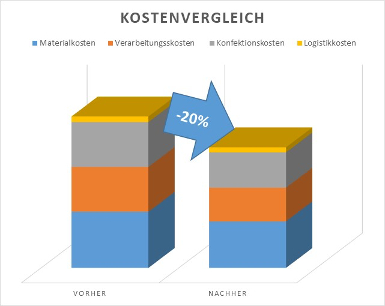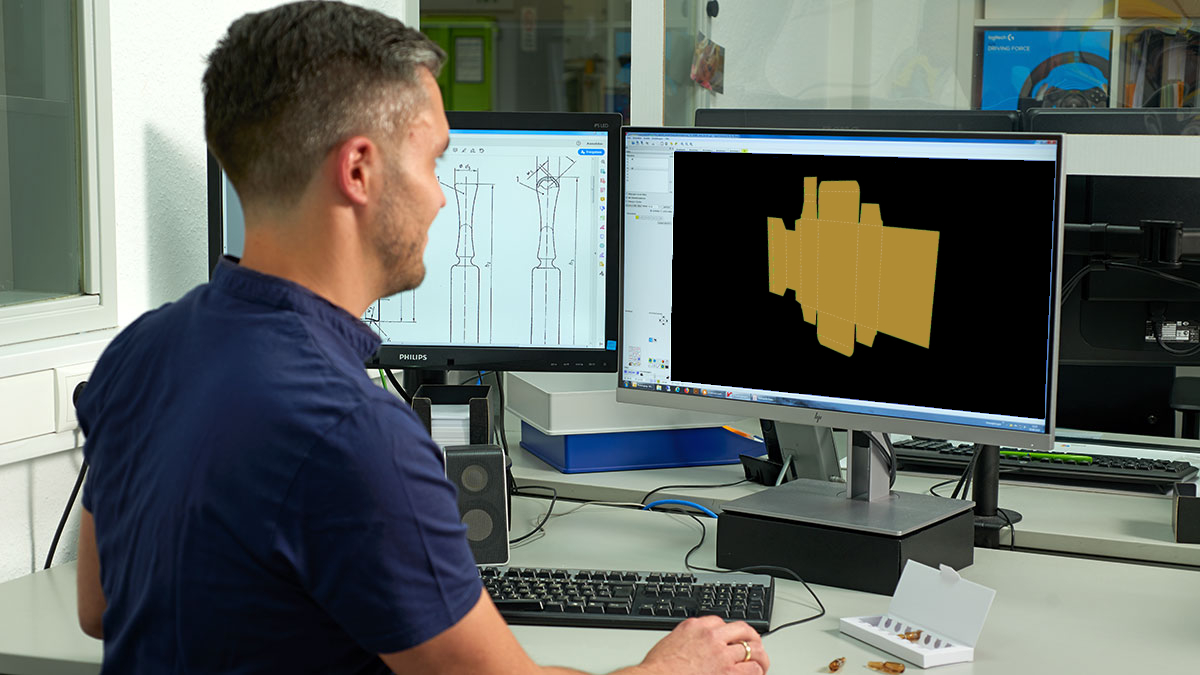Finding sustainable & economic savings potential for existing packaging
The aim of this development project was to optimize an existing, multi-part packaging for medium-priced branded everyday products. The success criteria for the modified packaging solution were the reduction of costs in production, packaging and logistics as well as the improvement of the ecological footprint.
How can full costs & total emissions be reduced?
After an in-depth analysis of the composition of the full packaging costs and based on a multi-part packaging solution for different products, the customer’s specifications for reducing material, processing, packaging and logistics costs were significantly exceeded.
In addition, emissions were reduced by over 19%. This success can be scaled as required and is quickly achieved even with medium-sized projects and medium quantities.

Medium-sized projects also offer great potential
The procedure is representative for products that are sold in medium quantities. In this case, there was an existing packaging solution that consisted of several parts and accommodated different products. As sales increased, packaging became the focus of joint optimization efforts.
A particular challenge in the mid-range sales segment is the importance of low-risk and lean project planning if optimization in purchasing cannot be bundled with other projects – time-consuming tests and coordination meetings with the development and production partner must be avoided.
Joint definition of success criteria
- Early quick check of the profitability of the project: The cost-benefit ratio should be better than 0.4 due to the size of the project.
- Joint definition of optimization targets for full costs across materials, production, packaging and logistics: reduction of at least 17%.
- Optimization of the ecological footprint by more than 15% and quantification based on comparative calculations in accordance with the Greenhouse Gas Protocol.

Pragmatic approach
Early milestones enable transparent and efficient collaboration:
You are currently viewing a placeholder content from Default. To access the actual content, click the button below. Please note that doing so will share data with third-party providers.
More Information- Discussion of the packaging to be optimized and search for bundling effects
- Recording the project costs and optimization targets
- Rough development, material selection and preliminary costing
- Interim evaluation and approval of the project
- Detailed development, logistical optimization, sampling and testing of the contour
- Revision for an overall optimum between manufacturing costs, assembly costs and product dimensions
- Process development for printing, finishing, processing and packaging
- Total calculation
- Technical and commercial approval
- Production
- Review
The results
The new packaging solution was profitable across the entire process chain thanks to the design-to-cost approach. By optimizing the design, material and finishing, the full costs could be reduced by 21.4%.
The new design requires significantly less material and the selected mono-recycling material can be completely recycled after use. The reduction in emissions was 19.3% (9to kg Co2 / oo).
In the individual analysis, 58% of the optimization is attributable to the design.
RHIEM’s cost matrix – the perfect analysis tool for determining the initial situation
Based on the results of the full cost analysis, we define economic savings potential for your packaging without fundamentally changing the look and feel for your customers.
Similarly, we also develop ways to sustainably reduce the CO2 footprint of your packaging solution by using more natural materials or climate-friendly production processes.
With RHIEM, you have an experienced, competent and reliable partner at your side with decades of experience and state-of-the-art printing tools and processes.





